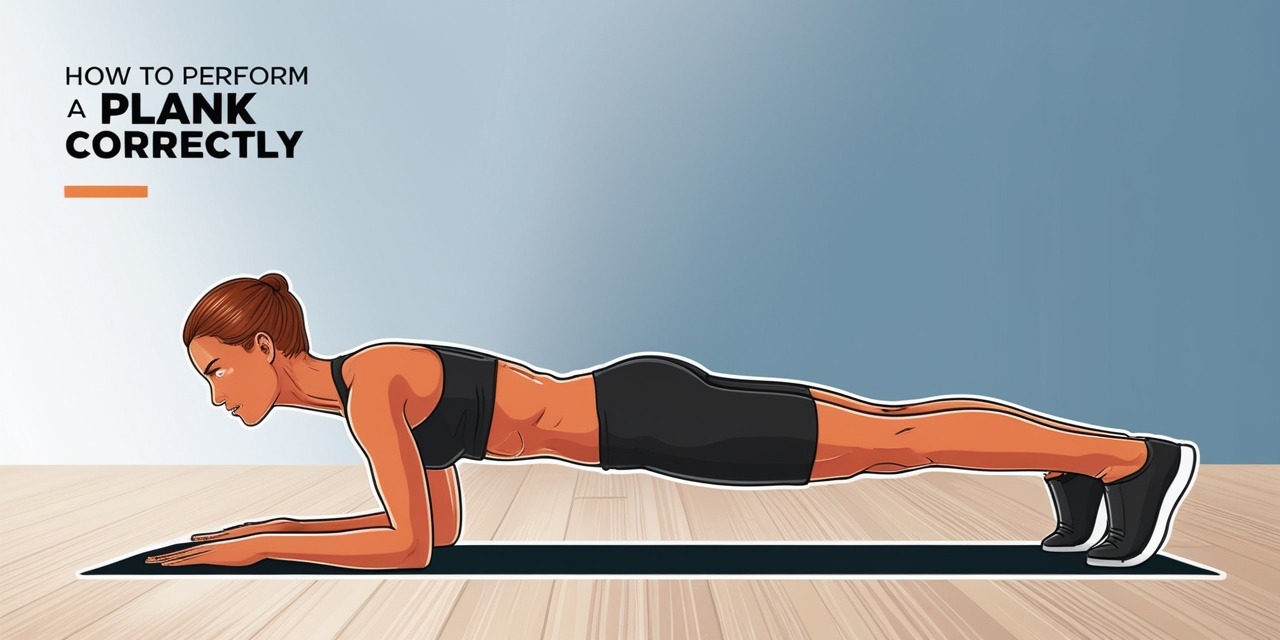How to Perform a Plank Correctly
Intro.
Table of Contents
Plank Correctly: Planking is one of the most compelling works out for reinforcing your center. It’s basic, requires no gear, and can be done anyplace. Be that as it may, performing a board accurately is significant to maintain a strategic distance from damage and maximize benefits. In this nitty gritty direct, we’ll break down the steps to perform a board accurately, supported by real information and real-life case considers. Let’s jump in!
What is a Plank?
A board is an isometric center quality work out that includes keeping up a position comparable to a push-up for the greatest conceivable time. The essential muscles worked amid a board are the rectus abdominis, transverse abdominis, and obliques, but it moreover locks in the shoulders, back, and legs.
Benefits of Planking
Before we get into the how-to, let’s rapidly cover why you ought to consolidate boards into your wellness routine:
Core Quality: Boards target all the center muscles, counting the transverse abdominis, rectus abdominis, and obliques.
Improved Pose: Reinforcing your center makes a difference keep up legitimate pose by supporting your spine.
Reduced Back Torment: A solid center can ease back torment by diminishing the strain on your spine.
Enhanced Adaptability: Boards extend the back muscle bunches, making strides in general flexibility.
Better Adjust: A solid center moves forward your adjust and stability.
How to Perform a planking Correctly
Performing a board might appear direct, but keeping up appropriate shape is basic. Here’s a step-by-step guide:
Start on All Fours: Start in a tabletop position with your hands straightforwardly beneath your shoulders and knees beneath your hips.
Extend Your Legs: Step your feet back one at a time to come into a tall board position. Your body ought to shape a straight line from your head to your heels.
Engage Your Center: Fix your stomach muscles as if you’re bracing for a punch. This makes a difference stabilize your spine.
Align Your Neck: Keep your neck in a impartial position by looking at a spot on the floor almost a foot in front of your hands.
Hold the Position: Keep up this position for as long as you can whereas keeping your frame intaglio. Point for 20-30 seconds if you’re a tenderfoot and continuously increment the time as you get stronger.
Common Botches and How to Maintain a strategic distance from Them
Even in spite of the fact that boards are straightforward, it’s simple to make botches that can diminish their viability or cause damage. Here are a few common botches and how to dodge them:
Sagging Hips: Letting your hips drop can put strain on your lower back. Keep your hips in line with your shoulders and heels.
Raised Hips: Lifting your hips as well tall takes the center off your center. Guarantee your body shapes a straight line.
Looking Up or Down: Keep your neck unbiased to maintain a strategic distance from straining it. See at a spot on the floor in front of you.
Holding Your Breath: Breathe consistently to keep up oxygen stream to your muscles.
Case Ponder: The Affect of Planking on Center Strength
A consider distributed in the Diary of Quality and Conditioning Inquire about inspected the impacts of planking on center quality. Members performed boards three times a week for six weeks. The comes about appeared a noteworthy increment in center quality and continuance, highlighting the viability of this exercise.
Variations of the Plank
Once you’ve aced the essential board, you can attempt these varieties to keep your workouts challenging and engaging:
Forearm Board: Instep of supporting yourself on your hands, lower down to your lower arms. This variety targets the center in an unexpected way and can be less demanding on the wrists.
Side Board: Move your weight to one hand and pivot your body to the side, stacking your feet. This variety targets the obliques.
Plank with Leg Lift: Lift one leg off the ground whereas keeping up the board position. This includes an additional challenge to your center and glutes.
Plank with Arm Lift: Lift one arm off the ground and amplify it in front of you. This variety challenges your adjust and center stability.
Plank Jacks: Begin in a tall board position and hop your feet out and in, comparable to a hopping jack. This includes a cardio component to the exercise.
Incorporating Boards into Your Routine
To get the most out of boards, join them into your customary workout schedule. Here’s a test plan:
Warm-Up: Begin with a 5-10 diminutive warm-up to get your blood flowing.
Plank Schedule: Perform 3 sets of boards, holding each for 30-60 seconds. Rest for 30 seconds between sets.
Cool Down: Wrap up with a 5-10 diminutive cool-down, counting extends for your center and back.
Real-Life Victory Stories
Many wellness devotees have experienced noteworthy advancements in their center quality and by and large wellness by consolidating boards into their schedules. For illustration, Jane, a 35-year-old office specialist, battled with lower back torment due to drawn out sitting. After joining boards into her day by day schedule, she taken note a considerable lessening in her back torment and an advancement in her posture.
Tips for Remaining Motivated
Staying propelled to perform boards routinely can be challenging. Here are a few tips to keep you on track:
Set Objectives: Set particular, achievable objectives for how long you need to hold a plank.
Track Advance: Keep a record of your board times and celebrate your improvements.
Join a Challenge: Take an interest in a board challenge with companions or online communities to remain motivated.
Mix It Up: Attempt diverse board varieties to keep your workouts interesting.
